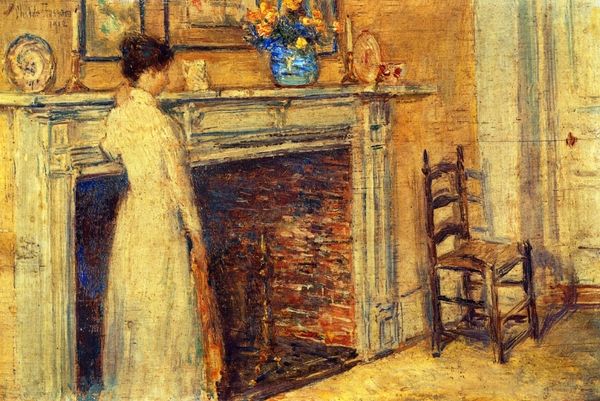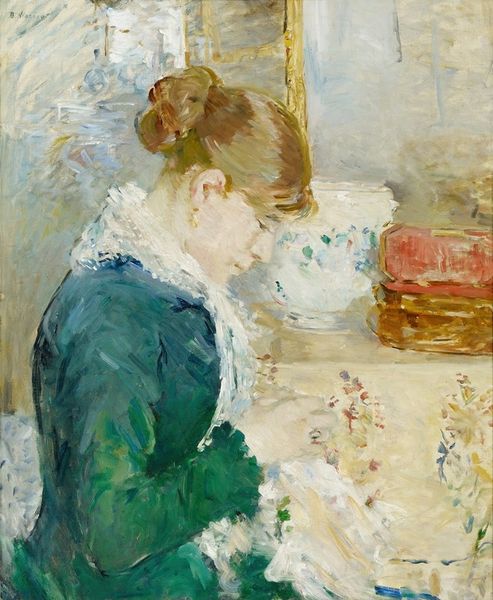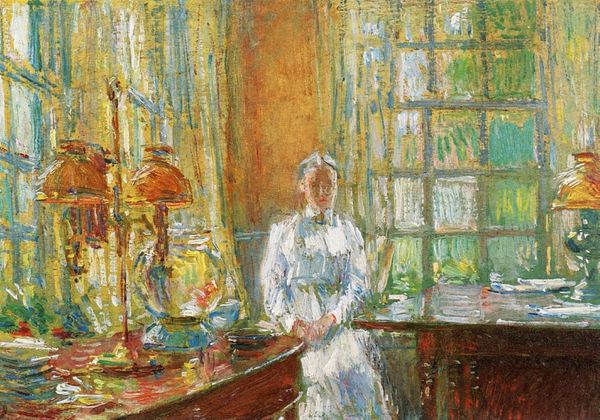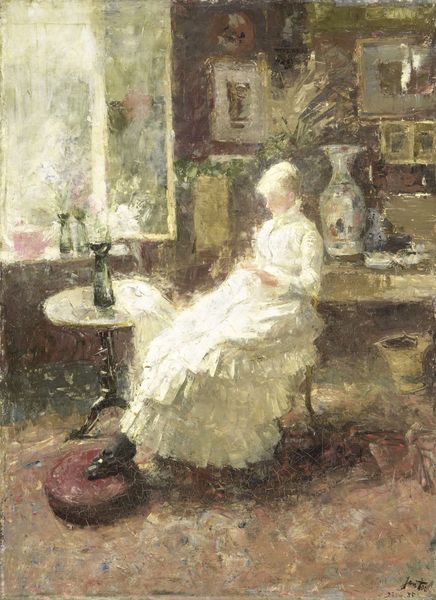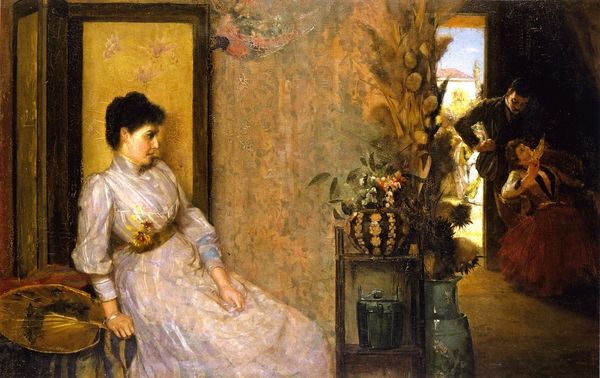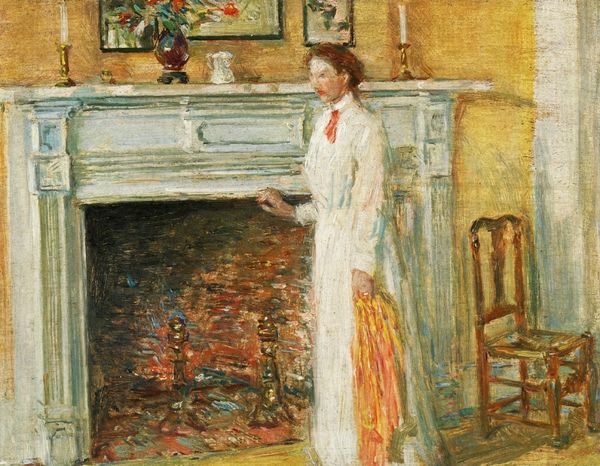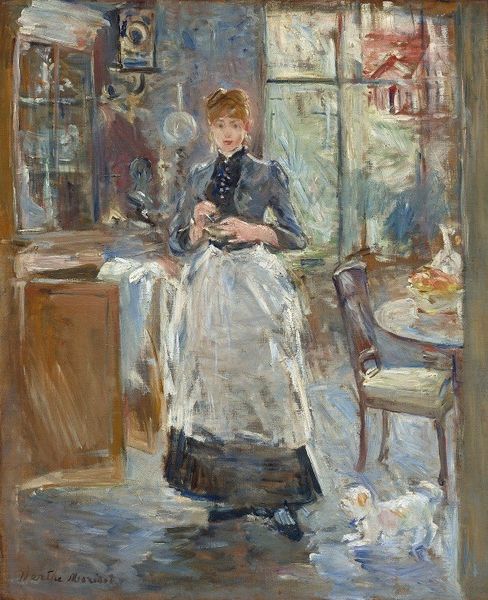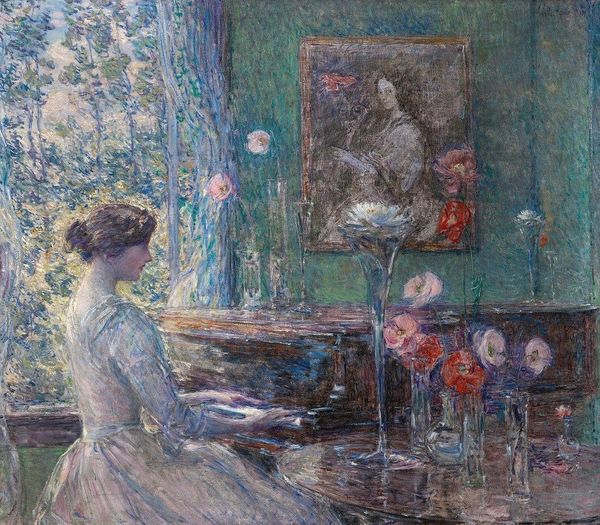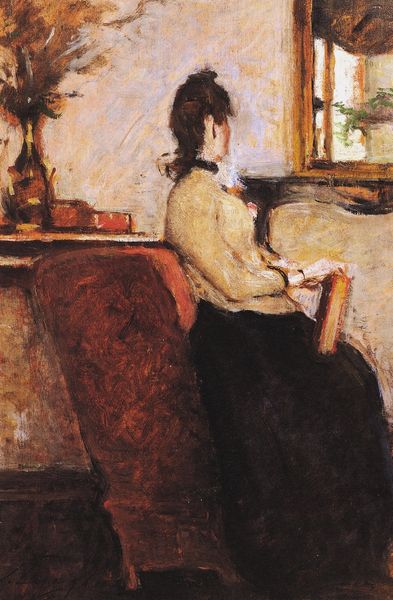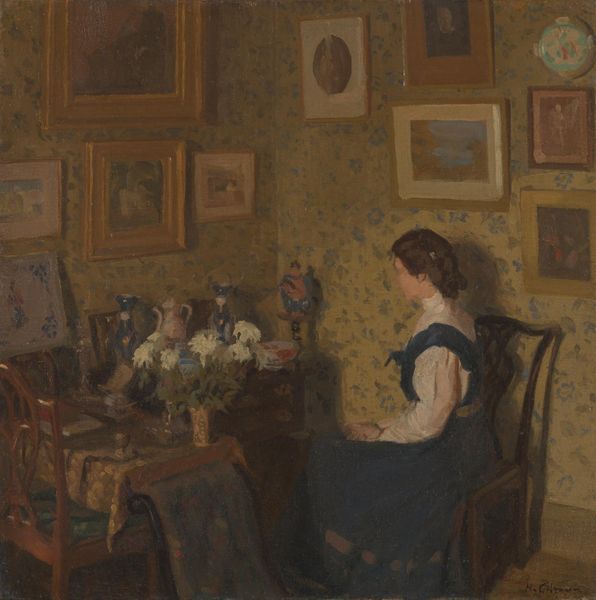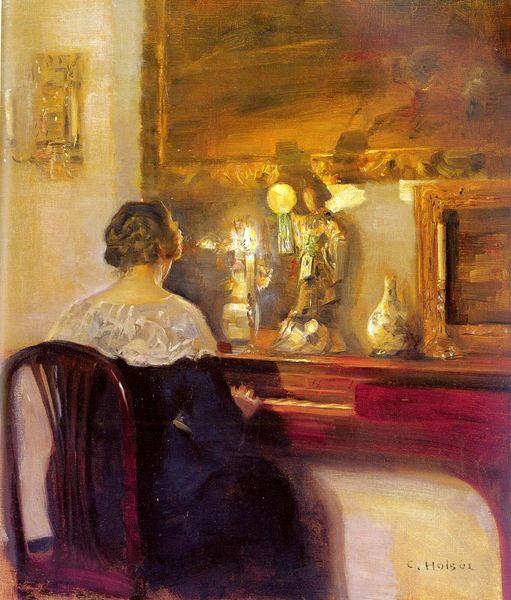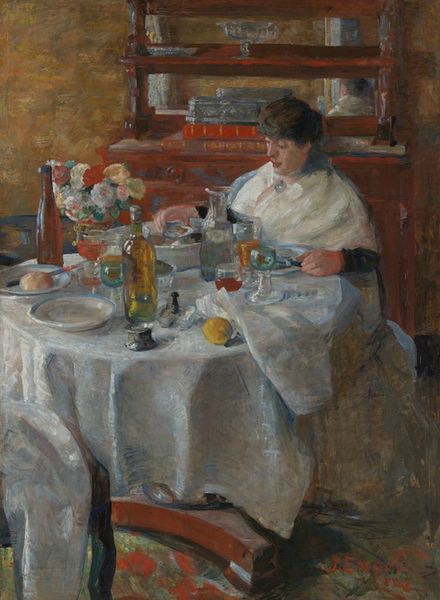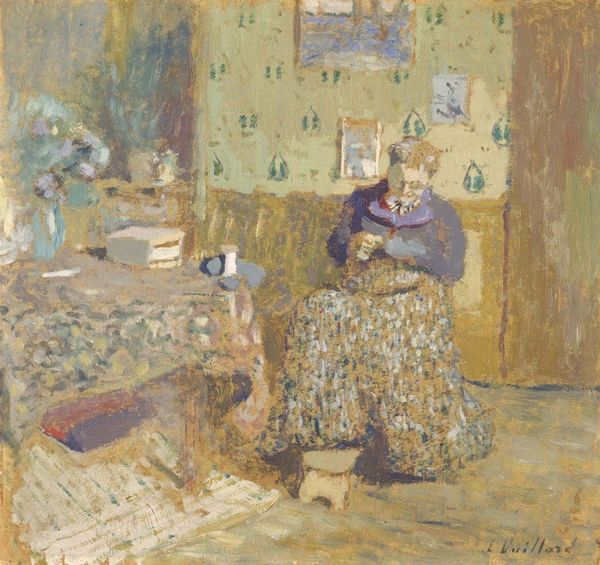
oil-paint
#
portrait
#
impressionism
#
oil-paint
#
furniture
#
figuration
#
oil painting
#
france
#
painterly
#
genre-painting
Copyright: Public domain
Editor: This is Berthe Morisot's "The Rouart's Dining Room," painted around 1880. It’s an oil painting depicting a woman in what appears to be a domestic interior. There's a calmness, a kind of quiet intimacy about it. What stands out to you in this piece? Curator: The painting provides insight into the socio-political dynamics of 19th-century France and Morisot's own position within it. What does it mean to have a woman, particularly a female Impressionist, painting domesticity? How might this space be perceived and experienced differently through a female gaze? Editor: I hadn’t thought about that perspective. So, her choice of subject is itself a statement? Curator: Absolutely. During this era, women's access to public spaces was limited, therefore the home was central to their lives and artistic expression. It becomes a form of resistance, validating their experiences and reclaiming their narratives within the art world. It challenges the dominant patriarchal art historical narratives by centering on female subjectivity and experience. What do you think of the woman turning away? Editor: It feels very personal and not performative. I notice the unfinished quality in the brushstrokes as well, like we’re glimpsing something private. Curator: Indeed. And if you see that tableware over there on the table it emphasizes the everyday rituals and labor often unseen and undervalued that contribute to broader conversations around gender and class. This painterly, loose technique then can also be seen as a move away from academic standards and toward capturing a more genuine representation of reality. Editor: So it's a subversion through intimacy, showing what's typically hidden. I see how looking at it through the lens of feminism helps unpack so much more than just a pretty picture. Curator: Precisely. By focusing on gender, class, and historical context, we discover its deeper cultural and political resonance, enriching our interpretation of art. Editor: That makes me appreciate it a lot more. I'll definitely keep that in mind.
Comments
No comments
Be the first to comment and join the conversation on the ultimate creative platform.
